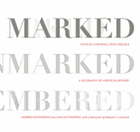
In Marked, Unmarked, Remembered, brothers Andrew (a photographer) and Alex (a historian) Lichtenstein combine their skills to memorialize the physical locations of traumas throughout American history. Fifty-seven black-and-white photos accompanied by short descriptions highlight massacres, lynchings, killings, pogroms and other horrors of the past. Some are easily recognized: the balcony where Martin Luther King, Jr. was assassinated; Japanese internment camps in World War II. Others are more obscure: the ruined home of a farmer who participated in the 1845 No Rent Rebellion; the site of the Pequot Massacre in Mystic, Conn.; the town square in Waco, Tex., where Jesse Washington was lynched.
The photographs, alongside a handful of more in-depth essays on these events by a series of American historians, are grouped by their present-day characteristics, giving the collection its name. This structure proves crucial in understanding the places presented. Assembling sites that are marked, sites that are unmarked and sites that host memorial events, Alex Lichtenstein argues in the introduction, provides an intentional "foregrounding of the active process of competing forms of memorialization."
Individually, Andrew's haunting images (and the stories that accompany them) are horrifying reminders of the trauma in the collective past, especially as it relates to the treatment of indigenous peoples, people of color and the poor in the U.S. Taken as a whole, Marked, Unmarked, Remembered is a call to both see and recall. As Andrew said of his own photography, "It's always about how we are viewing the past in the present." This is where we are, this book reminds us. This is how we got here. Don't look away. --Kerry McHugh, blogger at Entomology of a Bookworm

